Posts Tagged ‘Coins’
The History of Coin Collecting
Coin collecting is a hobby that spans across generations, but did you know it also spans across centuries?
In this blog, we talk you through the different phases of coin collecting!
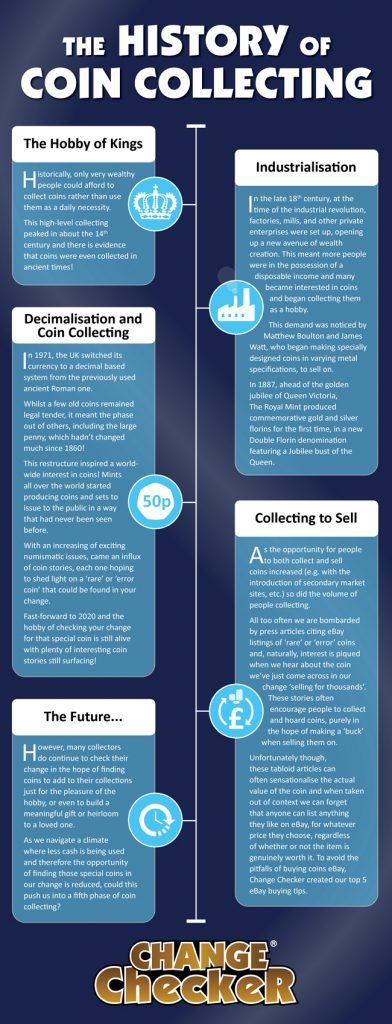
The Hobby of Kings
Historically, only very wealthy people or royals could afford to collect coins rather than use them as a daily necessity.
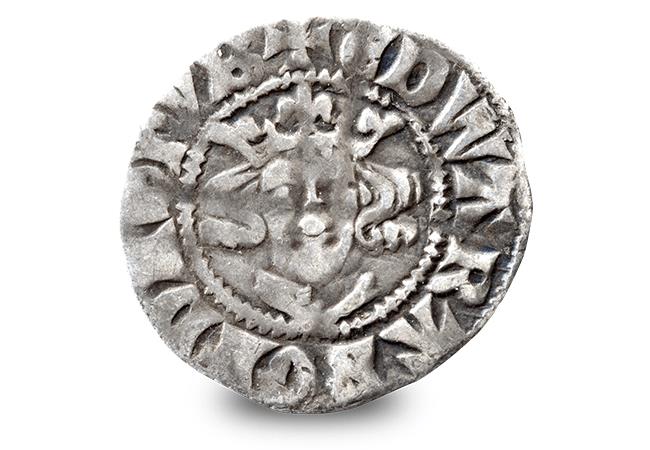
This high-level collecting peaked in about the 14th century and there is evidence that coins were even collected in ancient times!
Industrialisation
In the late 18th century, at the time of the industrial revolution, factories, mills, and other private enterprises were set up, opening up a new avenue of wealth creation. This meant more people were in possession of a disposable income and many became interested in coins and began collecting them as a hobby.
This demand was noticed by Matthew Boulton and James Watt, who began making specially designed coins in various metal specifications, to sell on.
In 1887, ahead of the golden jubilee of Queen Victoria, The Royal Mint produced commemorative gold and silver florins for the first time, a new Double Florin denomination featuring a Jubilee bust of the Queen.

This was to start a tradition of producing ‘special’ coins to mark particular historic or royal anniversaries that carried through to the 20th century.
Decimalisation and Coin Collecting
In 1971, the UK switched its currency to a decimal based system from the previously used system dating back to ancient Roman times.
Whilst a few old coins remained legal tender, it saw the phase out of others, including the large penny, which hadn’t changed much since 1860!
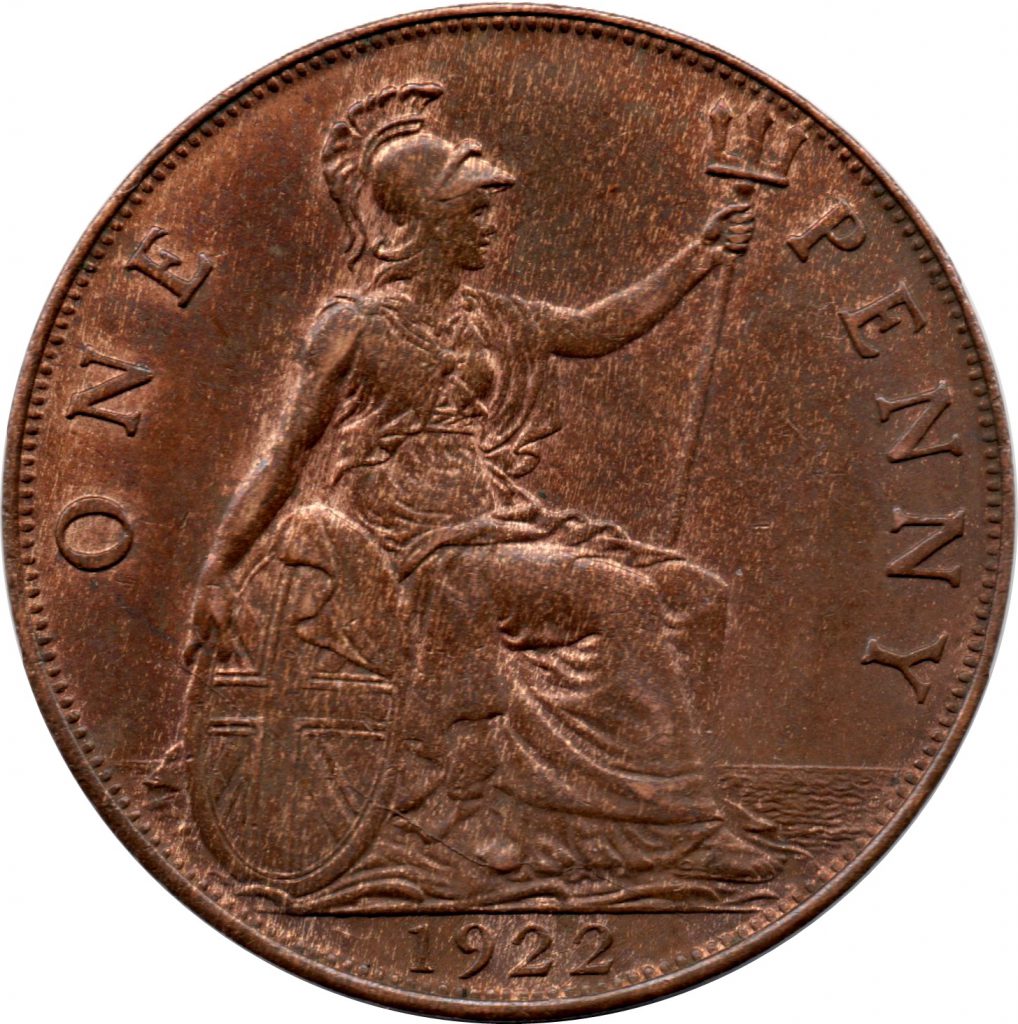
This restructure inspired a world-wide interest in coins! Mints all over the world started producing coins and sets to issue to the public in a way that had never been seen before.
With an increasing of exciting numismatic issues, came an influx of coin stories, each one hoping to shed light on a ‘rare’ or ‘error coin’ that could be found in your change.
Fast-forward to 2020 and the hobby of checking your change for that special coin is still alive with plenty of interesting coin stories still surfacing!
Collecting to Sell
As the opportunity for people to both collect and sell coins increased (e.g. with the introduction of secondary market sites, etc.) so did the volume of people collecting.
All too often we are bombarded by press articles citing eBay listings of ‘rare’ or ‘error’ coins and, naturally, interest is piqued when we hear about the coin we’ve just come across in our change ‘selling for thousands’. These stories often encourage people to collect and hoard coins, purely in the hope of making a ‘buck’ when selling them on.
Unfortunately though, these tabloid articles can often sensationalise the actual value of the coin and when taken out of context we can forget that anyone can list anything they like on eBay, for whatever price they choose, regardless of whether or not the item is genuinely worth it. To avoid the pitfalls of buying coins eBay, Change Checker created our top 5 eBay buying tips.

However, many collectors do continue to check their change in the hope of finding coins to add to their collections just for the pleasure of the hobby, or even to build a meaningful gift or heirloom to a loved one.
As we navigate a climate where less cash is being used and therefore the opportunity of finding those special coins in our change is reduced, could this push us into a fifth phase of coin collecting?
Secure the History of Britain in Coins Collecting Album!
Secure one to your collection today by clicking here >>
Is time up for our 2ps? Production of 2p and £2 coins could be halted for the next 10 years!
In March 2015, the UK treasury confirmed that 1p and 2p coins will continue to be used “for years to come”. However, it has recently been suggested that due to a cash usage slump, The Royal Mint is set to go ten years without producing anymore 2p coins!
But it’s not just our coppers at stake.. The same applies for £2 coins, as it has been revealed that in March 2020, The Royal Mint was sitting on 26 times as many £2 coins as it needed to.
According to the National Audit Office’s report into Britain’s cash usage, the number of coins produced each year by The Royal Mint fell by nearly two-thirds between 2011 and this year.
Less than a quarter of all payments were made by cash last year, according to figures released in June by the banking trade body UK Finance.
It’s fair to assume that even less cash has been used since the start of 2020 due to the coronavirus leading to fears of cash usage and a move to more contactless payments.
However, The Mint told Britain’s spending watchdog that there had been ‘sharp increases in demand’ for change ‘as many businesses and consumers hoarded coins in the early months of the pandemic’.
As a result, the Treasury ordered The Royal Mint to strike 60 million additional 1p coins over the summer to meet this new demand. So make sure you keep your eyes peeled for these new 1p coins, especially if you’re collecting dateruns!
The Royal Mint are required to forecast the demand for small change to ensure it keeps enough coins in stock without striking too few or too many, but with significant fluctuations in consumer behaviour in recent years, this has no doubt been a challenge.
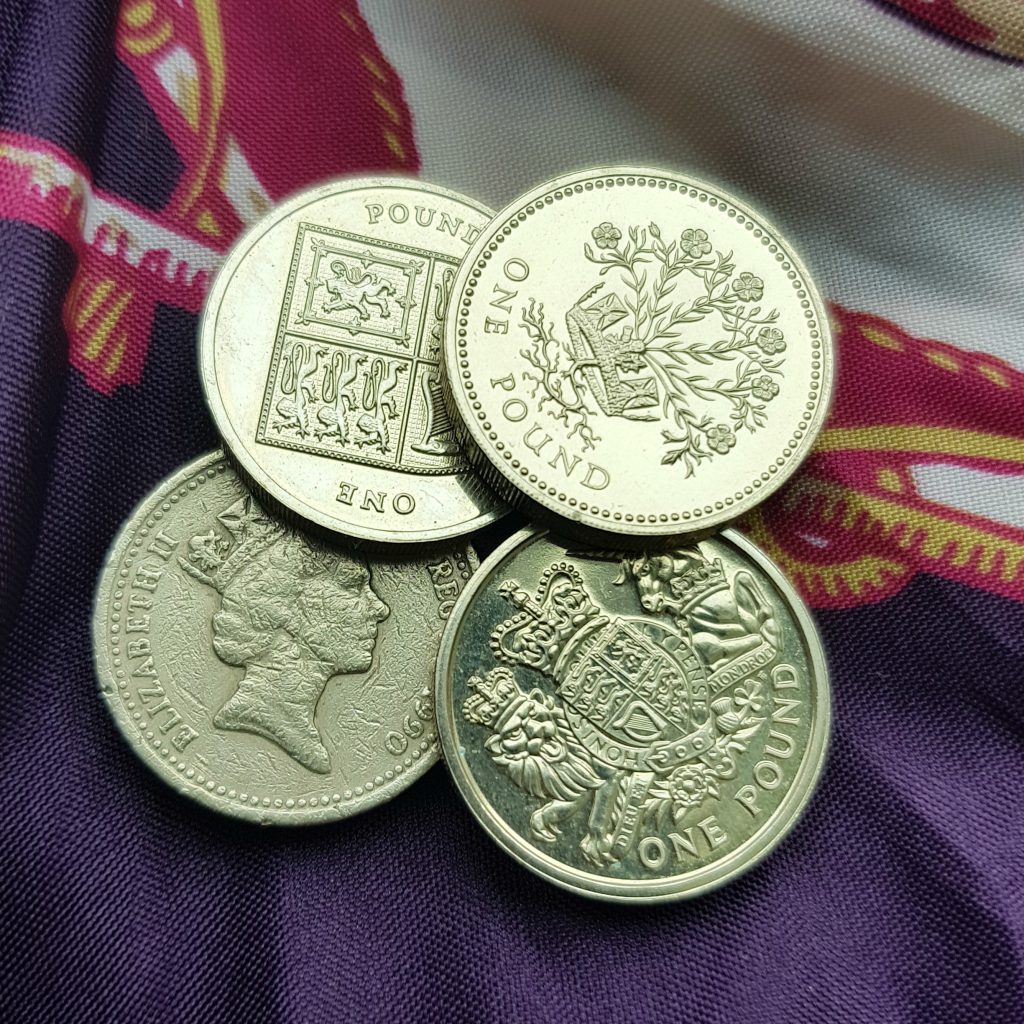
In 2017, after the introduction of the new 12-sided £1, The Royal Mint saw a swell in its coin stocks as people rushed to return their round pounds, ending up returning loose change of other denominations at the same time.

According to the NAO, at the end of March, The Royal Mint aimed to hold 700,000 £2 coins, but actually held 18.7million. And rather than holding its target of 15.9million 2p coins, it held 127.1million.
As a result, in March of this year, The NAO said The Royal Mint had estimated ‘it did not envisage producing any new 2p or £2 coins for at least 10 years’.
We haven’t seen a £2 enter circulation since 2016, so, could this mean that those 2016 dated £2s and 2017 dated 2p coins are the last of their kind? We certainly hope not.
But what about our coppers? Do you think we still need 1p and 2p coins in circulation? Have your say by voting in our poll on Facebook.
And what could the future for Britain’s definitive coinage be if the 1p and 2p coins were removed? Currently the definitive coins from 1p to 50p come together to create The Royal Shield, but with two key pieces missing, could this lead to a complete re-design?
We’d love to hear what you think about the use of cash vs card and the demand for our smaller denominations, so leave us a comment below to share your thoughts.
If you’re interested in coin collecting, our Change Checker web app is completely free to use and allows users to:
– Find and identify the coins in their pocket
– Collect and track the coins they have
– Swap their spare coins with other Change Checkers

Sign up today at: www.changechecker.org/app
Agatha Christie £2 celebrates 100 years of mystery!
Agatha Christie’s first novel The Mysterious Affair at Styles was published in 1920 and it kick-started the nation’s love of her detective novels and murder mysteries.
In 2020, to mark 100 years since her first publication, The Royal Mint celebrates the world’s best-selling novelist with the 2020 UK Agatha Christie £2.
2020 UK Agatha Christie £2
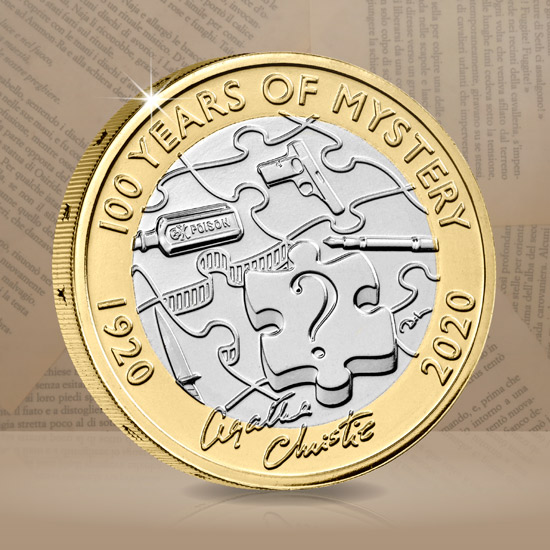
David Lawrence’s design of this coin pays homage to Christie’s crime novels, with a piece of a jigsaw slotting into place and her signature at the bottom.
The coin also features the edge inscription ‘100 years of mystery 1920’-2020’ to mark this very special anniversary.
Issued initially as part of the 2020 Commemorative Coin Set, this £2 coin was later individually released in Brilliant Uncirculated quality.
Murder, Mystery, and Masterpieces

After the end of the First World War, Christie published her first novel The Mysterious Affair at Styles. This incredibly popular story introduced readers to one of Christie’s most famous characters – Belgian detective Hercule Poirot*.
Writing well into her later years, Christie wrote more than 70 detective novels as well as short fiction. Her books have been made into films, television, and radio programmes. In 1971, she was made a Dame of the British Empire for her outstanding contribution to Literature.

In 2020, she was celebrated once more with this £2 coin and became another UK author to be commemorated on UK coinage…
2016 Shakespeare £2 Series
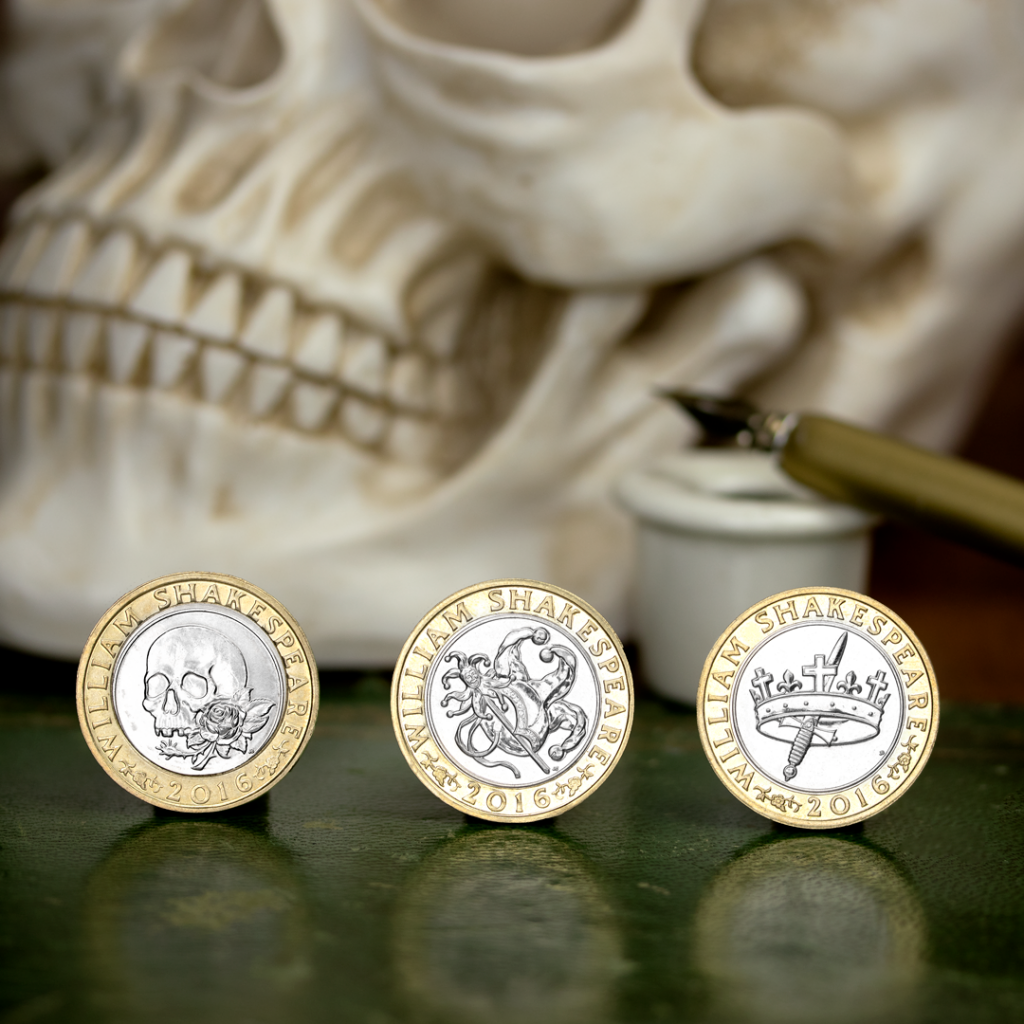
William Shakespeare is the most influential literary figure in British history and his works are an important part of Britain’s cultural heritage.
In 2016, a series of three £2 coins were issued to mark the 400th anniversary since his death and to celebrate his greatest works.
Each coin’s design takes inspiration from some of Shakespeare’s greatest works, including Macbeth (pictured right), A Midsummer Night’s Dream (central) and his most-famous love tragedy (pictured left).
All three coins entered circulation but the Comedy £2 has the lowest circulating mintage – just 4,355,000!
2017 Jane Austen
In 2017, to celebrate the life and works of one of Britain’s best-loved authors, The Royal Mint issued this Jane Austen £2.
Jane Austen is one of the best-loved English novelists from the 19th century. Her novels were revolutionary and from her first novel, Sense and Sensibility, readers began a love affair with her fiction that has lasted two centuries.
Designed by Dominique Evans, a portrait of Jane Austen features on the reverse of this coin. It did not enter general circulation and was issued in collector quality only.
2019 Sherlock Holmes 50p
In 2019, to mark 160 years since the birth of Sir Arthur Conan Doyle, The Royal Mint issued this 50p coin.
The prolific writer is best known for his incredibly popular detective stories featuring the fictional Sherlock Holmes™. It is said his works revolutionised the crime genre, and despite Doyle sharing an ambivalent relationship with his famous character, Holmes’ popularity resulted in Doyle becoming one of the best-paid authors of the time.
The reverse has been designed by Stephen Raw and features a silhouette of Sherlock smoking a pipe, surrounded by a few of his most-famous story titles.
It entered general circulation and has a mintage of 8,602,000.
2012 Charles Dickens £2
The Charles Dickens £2 coin was issued by The Royal Mint in 2012 to commemorate the 200th anniversary of one of Britain’s most famous and beloved writers.
His enchanting stories, vivid characters and depiction of Victorian life are widely acknowledged across the world by critics and scholars alike and his novels and short stories continue to be widely popular.
The design features Dickens’ recognisable profile crafted from the titles of his most famous works and is a favourite amongst collectors.
This coin was released into general circulation and has a mintage of 8,190,000.
2018 Mary Shelley’s Frankenstein £2
This £2 coin was issued by The Royal Mint to celebrate the 200th anniversary of the publication of Mary Shelley’s famous novel Frankenstein; or, The Modern Prometheus.
Whilst on holiday in Geneva Mary Shelley and her poet friends, including Lord Byron and future Husband Percy Shelley, decided to have a competition to see who could write the best horror story. Out of this Mary Shelley created Frankenstein, a story about a scientist’s scary act at playing God and creating life. It went on to become one of the best loved gothic novels.
The reverse of this gothic coin was designed by Thomas Doherty and features the words ‘Frankenstein’ in an electric gothic font. It features the edge inscription, Bicentenary of Mary Shelley’s The Modern Prometheus. It did not enter general circulation.
2016 Beatrix Potter Anniversary 50p
To celebrate the 150th anniversary of the birth of Beatrix Potter, the Royal Mint have released this 50p to celebrate Beatrix herself.
Designed by Emma Noble, the coin includes elements that celebrate Beatrix as the artist behind some of the best-loved characters in children’s literature along with the nostalgic font used for the inscription.
This coin entered general circulation and has a mintage of 6,900,000.
We love seeing Britain’s best-loved authors come to life on our UK coins, but which author coin is your favourite? Comment below!
Secure the Agatha Christie £2 in the 2020 Annual Set
This coin is no longer available individually, but you can still secure it as part of the 2020 Annual Coin Set >>









